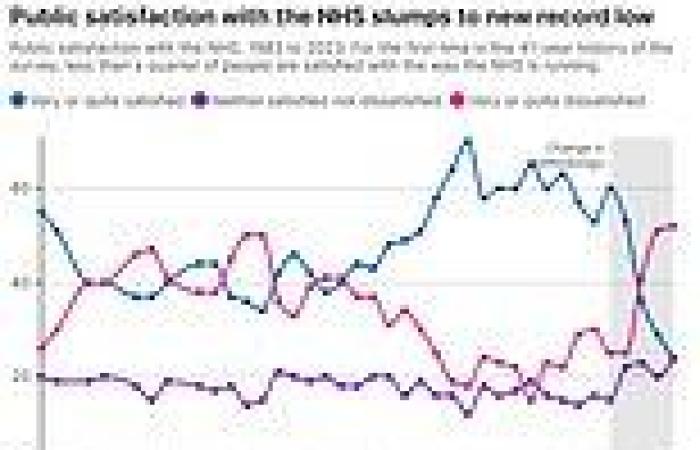Chart shows how Brits have fallen out of love with the NHS: Satisfaction with ... trends now
Public satisfaction with the NHS has fallen to the lowest level on record amid poor access to GPs and long waits for hospital care.
Fewer than one in four (24 per cent) people were happy with the health service in 2023, down 5 percentage points on the previous year alone.
It is the lowest level since records began in 1983, according to latest findings from the British Social Attitudes Survey.
The study, of 3,374 people in England, Wales and Scotland, is seen as the gold-standard test of how people feel about the NHS.
It reveals more than half (52 per cent) are now dissatisfied with the NHS, the highest proportion since the survey began.
The main reasons for dissatisfaction are waiting times for GP and hospital appointments (71 per cent), followed by staff shortages (54 per cent) and the Government not spending enough money on the NHS (47 per cent), despite record investment.
Health think tanks said there had been an ‘unprecedented downward spiral’ in public satisfaction in recent years and warned political leaders should take note of the ‘depressing’ results ahead of the general election.
Satisfaction with the NHS peaked in 2010, when 70 per cent of people were happy with the health service but it has since fallen.
It has suffered a particularly rapid decline of 29 percentage points since 2020, when services were crippled by the Covid-19 pandemic.
Strikes by nurses, junior doctors and consultants have also led to the widespread cancellation of operations and appointments over the past year.






